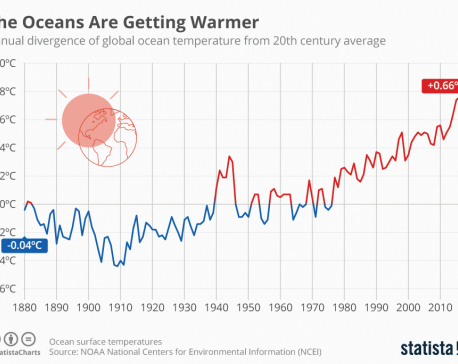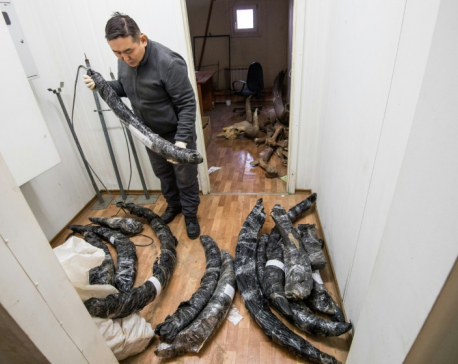
OR
Republica Infographics
Infographics: Arctic on front line of climate change
Published On: September 24, 2019 12:05 AM NPT By: Republica | @RepublicaNepal

The Arctic is warming twice as fast as the rest of the planet, driven by melting sea ice and thawing of carbon-rich Arctic permafrost, according to the National Oceanic and Atmospheric Administration (NOAA). In 2016, average Arctic surface temperatures were 3.5 degrees Celsius warmer than they were at the start of the 20th century, says NOAA. When sea ice vanishes, the colour of the Arctic changes. Deep blue waters of the Arctic Ocean absorb more solar energy than ice, which reflects 70 per cent of the sun’s radiation into space. In turn, this heat spiral causes more ice to melt.
The ice recedes to an annual minimum extent every September. The record low was set in 2012 when the ice shrank from 15.2 million square kilometres to 3.4m sq km. This year it is expected to decrease from 14.8m sq km to 4.2m sq km, a close second lowest minimum, according to the National Snow and Ice Data Center. Additionally, the average ice thickness has halved from 1980 to just one metre.
You May Like This

Infographics: The Oceans are Getting Warmer
Annual average temperatures of the oceans’ surfaces have been diverging from the 20th century (1900-1999) average more and more since... Read More...

In Siberia, Chinese demand for prehistoric tusks fuels 'mammoth rush'
Crouching near a wooden shed in his snowy backyard, Prokopy Nogovitsyn lifts up a grey tarpaulin and takes out a... Read More...

Infographics: Arctic sea ice melting
Arctic sea ice melting ... Read More...








Just In
- Customs revenue collection surpasses target at Tatopani border, Falls behind at Rasuwagadhi border in Q3
- Rain shocks: On the monsoon in 2024
- Govt receives 1,658 proposals for startup loans; Minimum of 50 points required for eligibility
- Unified Socialist leader Sodari appointed Sudurpaschim CM
- One Nepali dies in UAE flood
- Madhesh Province CM Yadav expands cabinet
- 12-hour OPD service at Damauli Hospital from Thursday
- Lawmaker Dr Sharma provides Rs 2 million to children's hospital











Leave A Comment